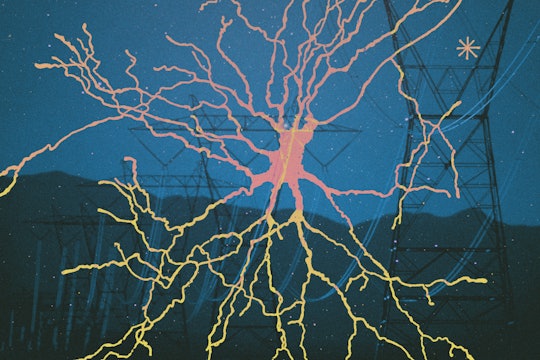
How scientists use light to manipulate cells with the flick of a switch
Optogenetics lets us probe the inner workings of cells with unprecedented precision
Imagine how complicated it is to build an entire human body starting from a single cell. To get from one egg cell to the many trillions of cells currently making up your body, you have a lot of growing and dividing to do. Certain cells must know to become muscle – others, bone. And just as important as knowing when to grow is knowing when to stop. When cells start growing out of control, it can lead to cancer.
Cells know what to do, and when to do it, thanks to chains of messengers that signal to them that they need to grow or move. But it's incredibly complicated. Signaling pathways are interconnected, branched, and full of feedback loops. So it's hard to tell not only how cells make the 'right' moves, but also what goes wrong before they make the wrong ones.
But recently, researchers figured out a way to untangle some of that complexity by reaching into the cell and turning specific pathways on or off – using light. We’ve entered a new era in cell biology, in which light allows us to probe the inner workings of the cell with unprecedented precision. Scientists hope that this will lead to unprecedented breakthroughs.
Called optogenetics, the technique was originally developed as a way to control when certain brain cells fired in order to determine their function. Since then, it's been used to control locomotion, to cure depressed mice, and even to erase a memory.
Don't worry: this doesn't mean that scientists will show up and erase your memories by flashing lights at you; this only works on animals that have been specially engineered to have light-sensitive proteins in their neurons. But being able to perform these kinds of experiments in a lab has revolutionized our ability to understand how brains work. Neurobiologists faced essentially the same problem as biologists studying signaling: within a complex network (in this case, the brain), how do we zero in on what makes things happen?
Previously, a researcher who wanted to turn on a signaling pathway would have to use chemicals. The issue with that approach is it ends up activating all the branches of a pathway at once; it's impossible to break it up into smaller, easier-to-understand pieces. And turning the signaling back off required washing away the chemical, which takes time. Ideally, a neurobiologist would be able to turn the pathway on and off as easily as flipping a switch. And finally – this is the really tricky part – they'd ideally be able to control where specific proteins are within a cell.
Before this technology was developed, researchers could label parts of the pathway with fluorescent proteins and watch how they move around the cell. They might see that a certain protein always moves from the center of the cell to the margins when the pathway is on but couldn’t reach into the cell and move it themselves. Now optogenetics allows just that.
Jared Toettcher and his colleagues, all at University of California San Francisco, used this technique in 2013 to study a part of the cellular signaling pathway that plays a role in causing cancer in humans, a protein called Ras. Part of a pathway that plays a crucial role in cell survival, proliferation, and differentiation (that is, the decision to become a specific type of cell, like muscle or bone), Ras is also the most commonly mutated oncogene. About one in three human tumors contain a version of Ras that has mutated so that it’s always active. If we can understand how this pathway works in detail, we can design new drugs that modulate its activity, which could help in treating many forms of cancer.
To bring Ras under light control, the researchers used two plant proteins that bind together in response to red light. These researchers stuck one protein to the Ras activator and the other to the cell membrane, which is where Ras goes to be activated. Then, with a flick of red light, the two plant proteins come together, triggering the entire signaling cascade.
Scientists then used this technique to begin answering one of the major questions in signaling: if a single pathway controls multiple outcomes (for instance, survival, proliferation, and differentiation), how does the cell know which is the right one? The researchers found that Ras turns on one set of proteins when it’s activated for a few minutes, and a different set of proteins when it’s activated for over an hour. That suggests that, though only one pathway may control all the outcomes, the pattern of activation can tell you which is correct.
Researchers hope to repeat these experiments in cancer cells, but we'll have to get a better understanding of how signaling happens in healthy cells first. Ultimately, the ability to compare signaling in healthy cells to that in cancer cells will give us insight into how cancer cells are wired, and ultimately, help us to fix them.
